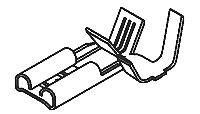6281: Features: - Operates from single 5V supply - Input current: 150 nA max. over temperature - Offset current: 20 nA max. over temperature - Differential input voltage range: +30V - Power consumption: 1...
floor Price/Ceiling Price
- Part Number:
- 6281
- Supply Ability:
- 5000
Price Break
- Qty
- 1~5000
- Unit Price
- Negotiable
- Processing time
- 15 Days
SeekIC Buyer Protection PLUS - newly updated for 2013!
- Escrow Protection.
- Guaranteed refunds.
- Secure payments.
- Learn more >>
Month Sales
268 Transactions
Payment Methods
All payment methods are secure and covered by SeekIC Buyer Protection PLUS.

 6281 Data Sheet
6281 Data Sheet






